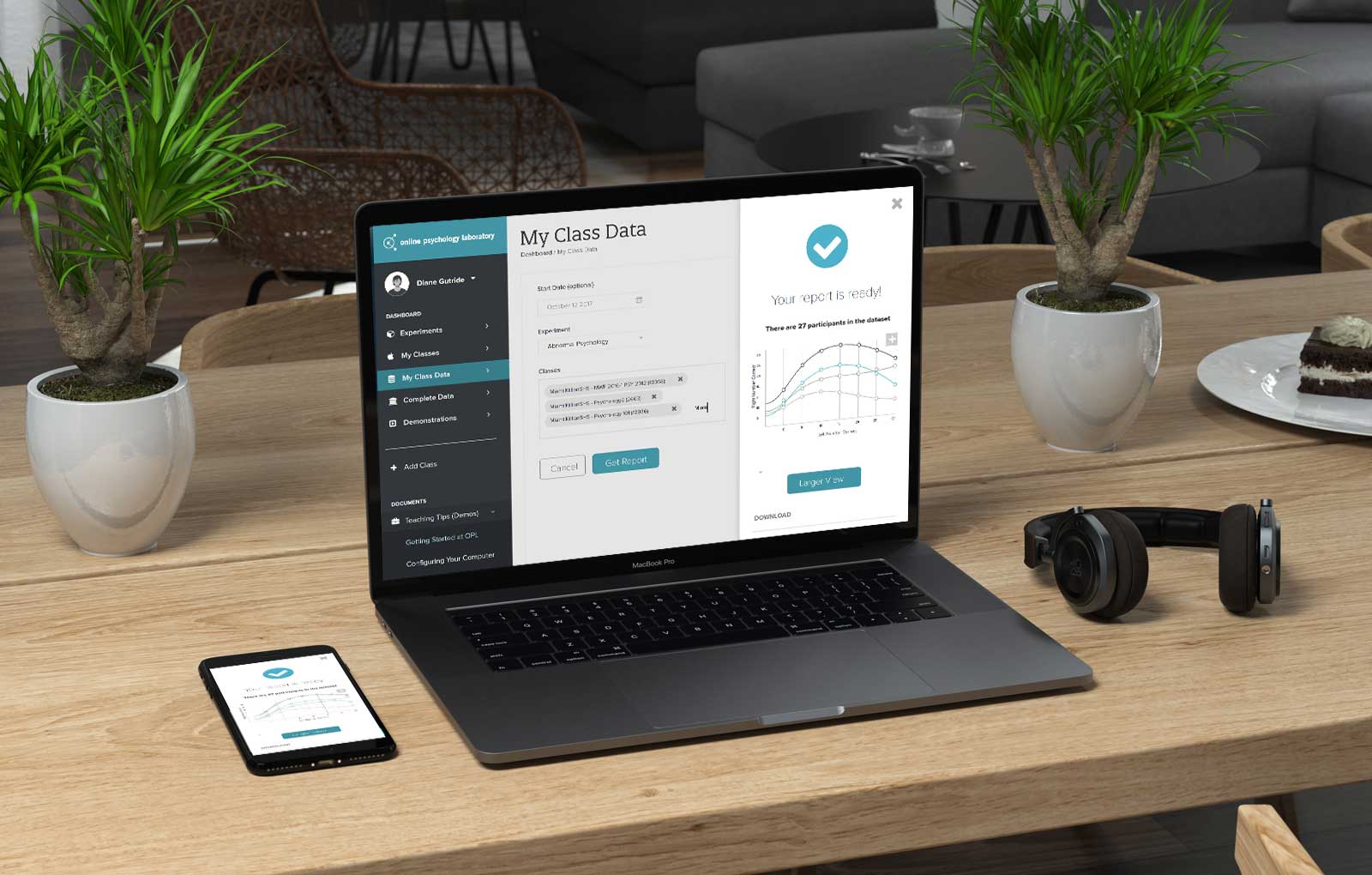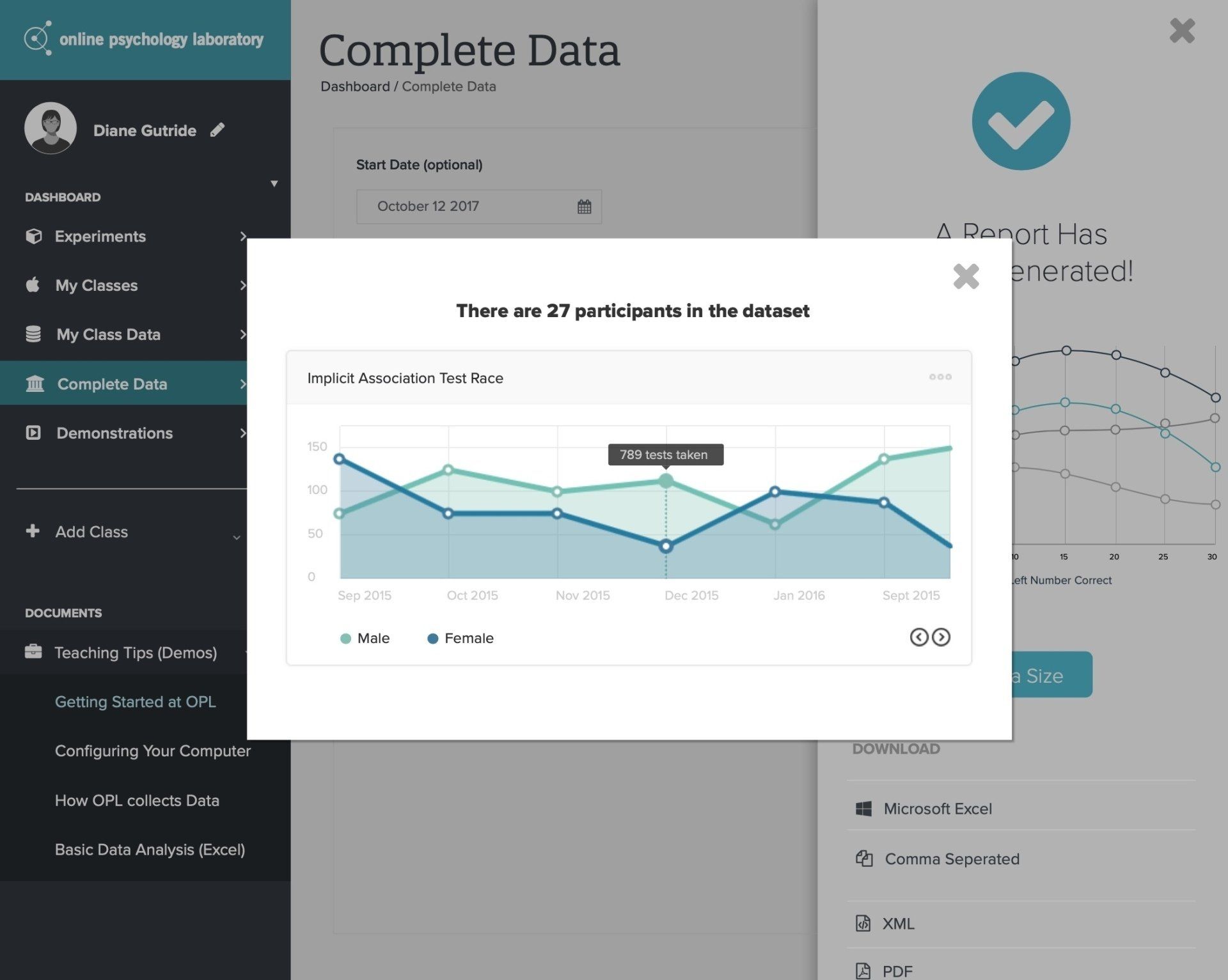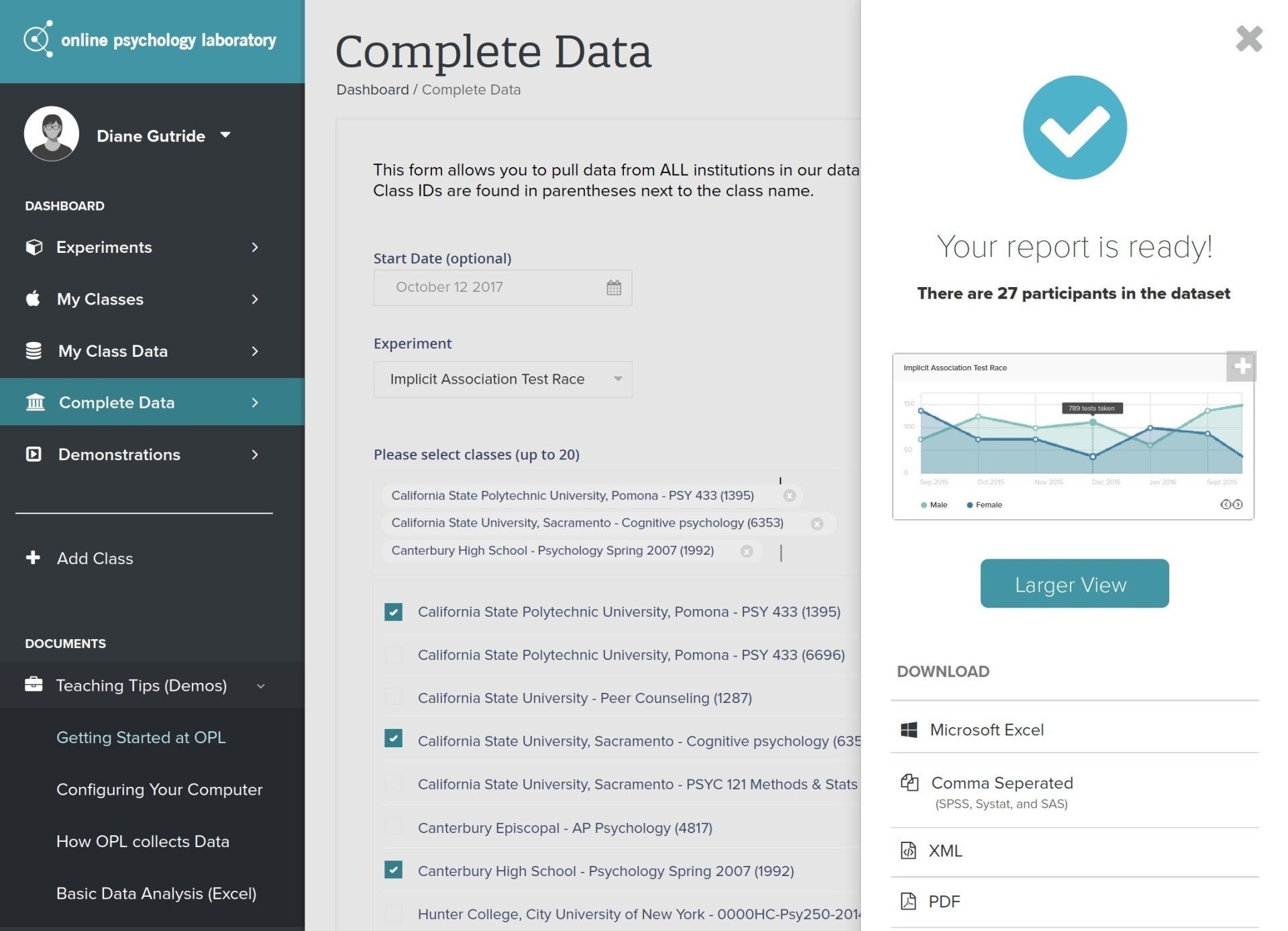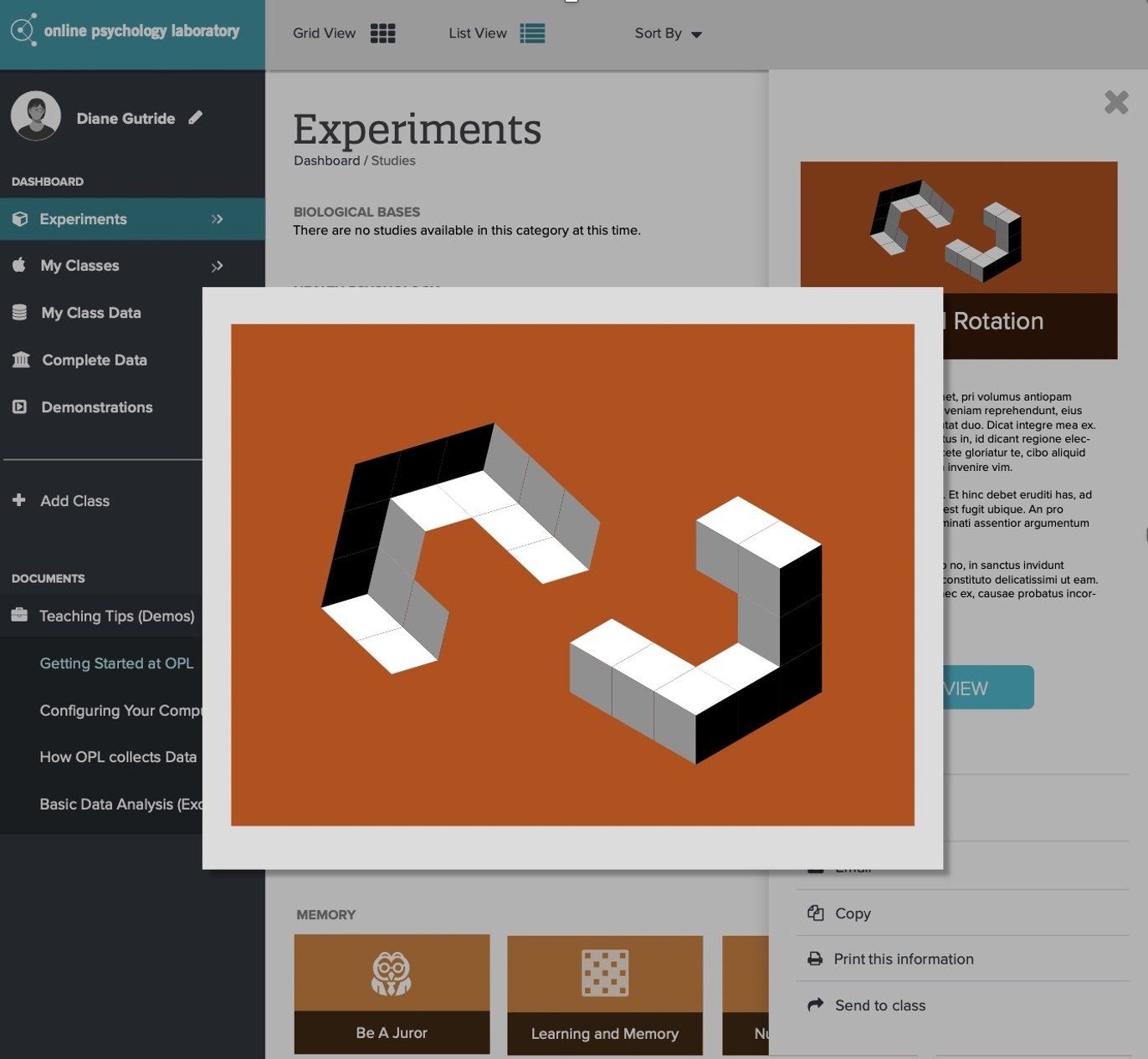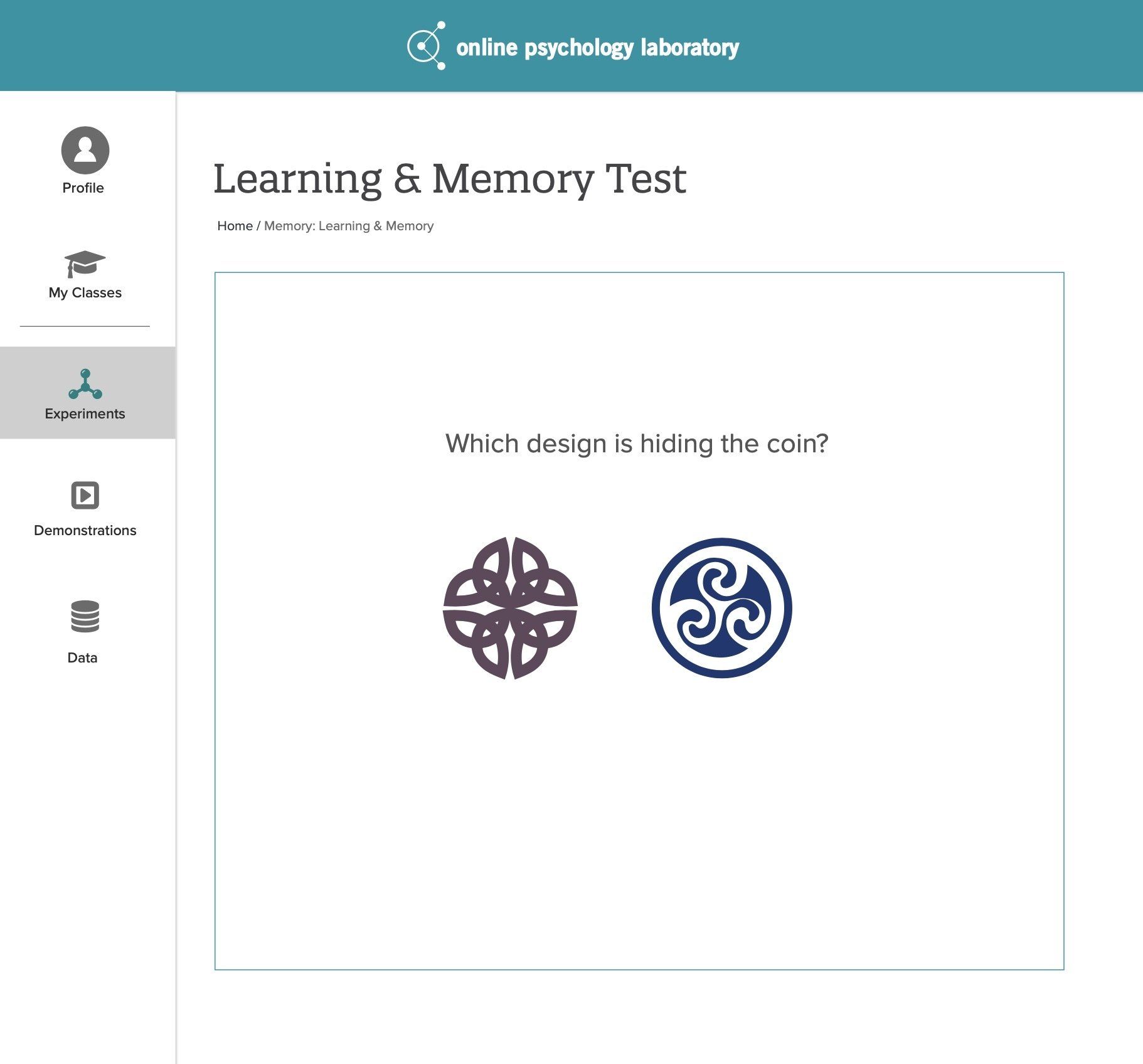Website & App Design
An interactive dashboard that helps educators teach students
about psychological research and how to analyze data.
Live site: Online Psychology Laboratory (new window)
about psychological research and how to analyze data.
My Role
UX & Visual Designer
Team
UX & Visual Designer
Stakeholders
Developer
Deliverables
UX Discovery & Research
Wireframes
Interactive prototypes
Visual Design System
Logo & Brand
Duration
6 months
This project involved a complete redesign of an interactive psychology teaching tool. This tool is used by students and teachers around the world. It allows teachers to assign tasks to students. Then, students explore pre-loaded sample psychology experiments. Once the tasks are completed the results can be sent to the teachers. Students are also able to experiment with large amounts of test data for research and analysis purposes. This helps prepare them for research in their higher education and psychology careers.
Challenge: To redesign an outdated interactive psychology teaching tool that is widely used by students and teachers around the world and provide a modern user-centered design experience.
Process: Conducted discovery exercises with stakeholders, created a project strategy and roadmap, and designed user flows for public, student, and educator views. Services included UX, branding, and user interface design. Weekly meetings with stakeholders were held, and Kristin created UI elements, wireframes, prototypes, and managed the UAT and QA process.
Research: User interviews were facilitated with teachers, college professors, and students. Research findings were synthesized to create a report with recommendations for the team's review.
Discovery Outcome: User research discovered that the concept functionality may not be suitable for users with technical limitations, such as old devices or those living in rural areas with poor internet. As a result, accessibility and performance became a top priority.
Special Consideration: The team considered complex constraints surrounding the existing account holders with the American Psychological Association website and worked closely with engineers to solve for smooth integration and transition.
Final Result: The redesigned tool includes unique dashboards for students and educators, 60 individual interactive modules, and features that allow users to apply filters and download datasets for their own research purposes. The product is designed to reach a wide audience, including those in rural areas with limited data bandwidth and dated devices.
What I changed based on user research
- I prioritized accessibility. I followed WCAG guidelines ensuring text was 18px +, images had alt tags, color contrast met the requirements.
- Originally, I had included a "download now" button which required a student to download locally and email results to their teacher. Instead, I introduced the idea of an "email results" feature. This allows the student to submit results through the tool itself, sparing them from having to use carrier data or risking download fail errors in rural areas.
- I removed unnecessary images from the design to cut back on bandwidth demands.
Special consideration
I had to consider complex constraints surrounding the existing account holders with the American Psychological Association website. I worked closely with engineers to solve for smooth integration and transit ion.
"I believe in using design to make a positive impact in the world"
Office Hours: M-F 9am-5pm • 540-421-9680 • Copyright 2025 Alpine Design & Consulting, LLC
